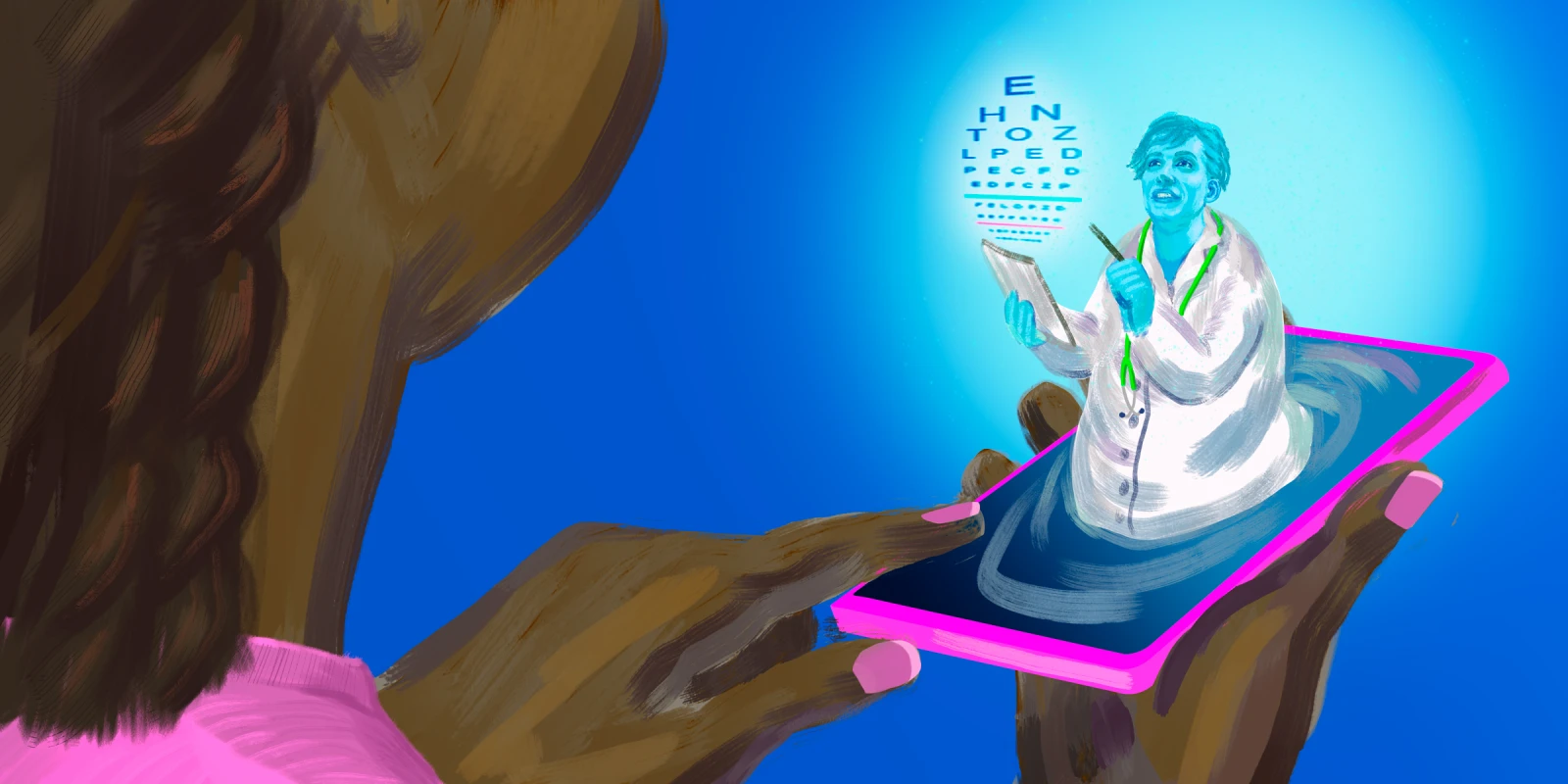The slit lamp tells us almost all we need to know about a patient’s eye. The anatomy of the eye is such that most of its internal structures are visible with the correct examination techniques. Ophthalmology is one of the few specialties in which talking to the patient is often considered less informative than an exam, if a choice must be made between the two. However, the ophthalmologic exam also comes with a risk for the provider and the patient as it requires examination across a very short distance, and requires providers to handle patients’ mucous membranes. In the current pandemic, ophthalmology was found to be one of the specialties with the highest risk of COVID-19 exposure for the provider, and even before the pandemic, there were several reported cases of adenovirus outbreaks in NICUs during examinations of newborns. As the COVID-19 pandemic swept through New York City, telemedicine became one of the only means of dealing with any ophthalmologic issue that was not an emergency. Of course, implementing telemedicine in the specialty came with its own successes and failures and ultimately helped us understand the future of telemedicine in the field.
I still remember the day all clinic appointments and ambulatory surgeries were canceled. It was a Tuesday, and we had planned for a busy day of clinic and surgery. The appointments, without much warning, all became televisits, and we had to rapidly learn how to discern a patient’s ocular health over the phone or video. The COVID-19 pandemic forced many offices across NYC and the country to begin using teleophthalmology services. Telehealth was largely used for routine glaucoma visits, uncomplicated post-ops, and non-urgent acute issues. Optometrists and ophthalmologists began working together in new ways to appropriately triage patients. New video technology was embedded into EMR systems to allow providers the most access possible to patients. Telehealth visits became the primary modality physicians used during the day, with in-person visits for those few patients who needed acute care, post-ops, or required an in-office procedure. But, as the pandemic waned in NYC, in-office visits became the norm again, and only a few patients requested teleophthalmology visits during the week, usually because they were still afraid to come into a medical office in person. Telemedicine’s dominance is already receding, but the lessons we learned from the pandemic will shape the future of our field.
The use of telemedicine during the pandemic allowed providers to continue to follow patients while maintaining minimum exposure to the virus. Many patients in ophthalmology require regular visits to gauge the progression of their disease and to remind them to continue to take care of their eyes, whether it is by using glaucoma drops or by maintaining their blood sugars. In a similar vein, ophthalmologists were able to provide a degree of social support to their patients, which strengthened the patient-provider relationship and increased the likelihood that patients would return to see their provider once the pandemic waned. Finally, the pandemic also showed us that by intertwining in-person ophthalmologic care with televisits, providers can maximize their ability to see more patients with acute problems in person, while continuing to see patients with less acute issues via telemedicine.
The first large-scale use of teleophthalmology during the pandemic demonstrated that the field is not quite ready for a full-fledged integration of telemedicine, but it also allowed us to see areas of potential improvement for remote visits. In ophthalmology, symptoms are of limited utility in describing visual problems as they can be overlapping and non-specific. Thus, providers must learn how to ask questions to tease out symptoms and must learn to further understand subtleties in patient responses. New scales or questionnaires to understand the severity of illness based on symptoms could also contribute to provider understanding of a patient’s disease state. In terms of technology-related prowess, ophthalmology patients are often older and had some difficulty using telehealth services. In particular, patients had difficulty participating in video visits and using EMR telehealth features. Additionally, EMR systems were not fully equipped to incorporate teleophthalmology visits, and were still geared toward in-office patient follow up. These issues highlighted the need for improvement of telemedicine technology itself, in terms of ease of use for the patient and the provider. Finally, performing any kind of physical examination during a televisit proved particularly difficult in ophthalmology, as much of the exam requires specialized equipment and training. Conducting virtual patient visits showed ophthalmologists that the technology must be adapted to better allow for remote physical examination; more specifically, new technologies must be developed to allow patients to examine themselves at home.
The COVID-19 pandemic showed evidence of the massive potential of teleophthalmology, as well as the potential areas for improvement. By continuing to provide remote care to patients during the pandemic, medical professionals were able to provide essential sight-saving services. The full implications of being able to provide quality care without an in-office visit remain to be seen. But, at the very least, patients without previous access to ophthalmologic care in underserved areas of the U.S. — and even in developing countries — could access care to prevent disability and blindness. Continuing to develop technology and identifying new ways in which we can utilize telemedicine is a promising field of inquiry for improving the vision of millions of patients.
Dr. Karani is an ophthalmology resident at the Columbia University Medical Center in New York City. She completed her MD/MPH at Johns Hopkins University School of Medicine and is passionate about taking care of patients and understanding their stories, solving public health issues affecting underserved populations, and writing about her experiences. She is a 2020–2021 Doximity Op-Med Fellow.
Illustration by Jennifer Bogartz
Click here to see more perspectives on COVID-19 from the Doximity network.
Click here for up-to-date news about COVID-19 on Doximity.




